
As CRM evolves, with low-cost hosted CRM options surfacing to compete with the traditional in-house software model, companies are trying to determine how best to manage customer relationships on a reasonable budget. With the cost of a point-to-point environment reaching US$75,000 per interface, it is no wonder companies are seeking ways to lower their total cost of ownership.
However, in-house CRM software providers are still going strong and adapting to the changing industry landscape. Enterprise software company SAP, for example, is determined to stay focused on the basics: improving business processes and gauging how those changes affect customers. John Grozier, the company’s vice president of solution marketing, talked with CRM Buyer about today’s industry trends and why in-house CRM software has staying power.
CRM Buyer: There’s been continuing debate on whether it’s better to select a best-of-breed CRM solution or a solution that is a component of an ERP suite. What’s your opinion on which factors a company can use when choosing between the two?
John Grozier: I think that debates like these are distractions, in some ways. If you go into the marketplace, people are still focused on solving a customer issue. Rather than looking at a certain kind of solution, I think most of our customers are looking at CRM and saying, “I have some fundamental problem that I’m trying to solve,” and their customers are at the center of that. That’s where a company should begin.
CRM Buyer: How do you think the landscape has changed in recent years for businesses trying to implement a CRM strategy?
Grozier:
I think the opportunities have evolved beyond where they were in the past. Before, people were focused on improving efficiencies — they wanted to know how to run a better call center and reach the right market. Now … many people are starting to get beyond those issues. They realize that the call center isn’t an endpoint for CRM, it’s an entry point to begin the CRM journey toward building customer relationships. With that in mind, they can integrate data better or find ways of tapping into the supply chain to provide a more effective call center.
So … many customers are maturing to a point where they can take a broad view of the business and see more ROI.
CRM Buyer: What is the largest trend you see happening in the CRM market?
Grozier:
I think one of the largest trends is that companies are adopting an incremental approach to CRM. We approach this by providing that, not only with the design of our application, but in the way that we do implementation. It allows the customer to … pick and choose business processes based on what they need. The way we deliver our software, especially on top of NetWeaver, allows customers to take this incremental approach, and we’ve had a number of victories with it.
CRM Buyer: Why do you think companies are so interested in taking the incremental approach to CRM?
Grozier: Companies of all sizes are focused on getting quick and demonstrated value. This has become a default approach — to look for smaller, quick projects and then move on to the next phase. By doing it this way, they can demonstrate value all the way along, not just at the end of an implementation.
CRM Buyer: Hosted solutions have been getting some attention lately. What do you think are the benefits and drawbacks of doing hosted CRM?
Grozier:
Hosted is really just a delivery mechanism, and as a market, it isn’t really news. There are certain pros and cons to how people would like their software to be delivered. The hosted model has a price point attraction, and a lot of noise has been made about that. Also, how it’s easy to get started with hosted and get up and running. But it’s limited. Ultimately, we’re not seeing that it’s going beyond an initial need. Most customers realize they hit a ceiling at some point and they need to move to something else.
What we’ve seen is the longer-term value that customers get out of our solutions. That comes out of the ability to have connected business processes. True business processes cross departmental boundaries. So, while hosted solutions are initially attractive, in the longer term they kind of top out in terms of the value they can deliver to customers because ultimately [customers] want an end-to-end view. And that’s where the in-house model succeeds.
CRM Buyer: SAP has been focusing on trade promotion management as an example of how CRM connects customer touch points across an entire business ecosystem. How does that work?
Grozier: Trade promotion management is designed to help consumer goods companies make their business processes more efficient. For example, a large retail chain might have different product intermediaries that take products from consumer goods companies. There comes a need to promote products that are produced through this distribution chain. Promotion can take on different aspects, like coupons, rebates, what have you. Some of this involves volume agreements that might be executed.
If you can manage the entire process efficiently, it becomes very significant. Consumer goods companies spend about 16 to 17 percent of their revenue on trade promotion, so anything they can have that will have a huge impact on their bottom line is important. This is one of the examples of how business processes cross software bounds.
We’re also doing similar work with other industries, like the media industry concerning intellectual property, but it all comes back to this notion that customers across these industries may be very different, but there still needs to be a connected view of CRM. Realizing that is why we’re reaching this new level of sophistication.



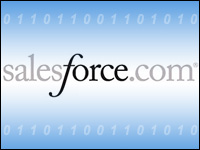

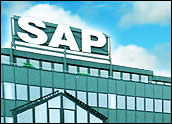

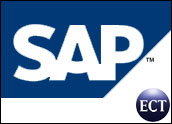
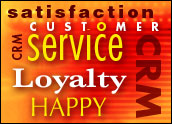
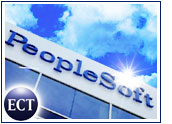
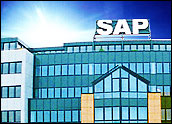
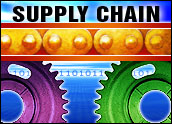




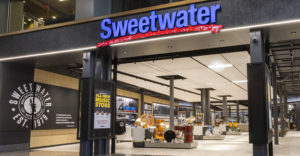


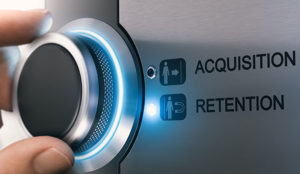



































Social CRM
See all Social CRM